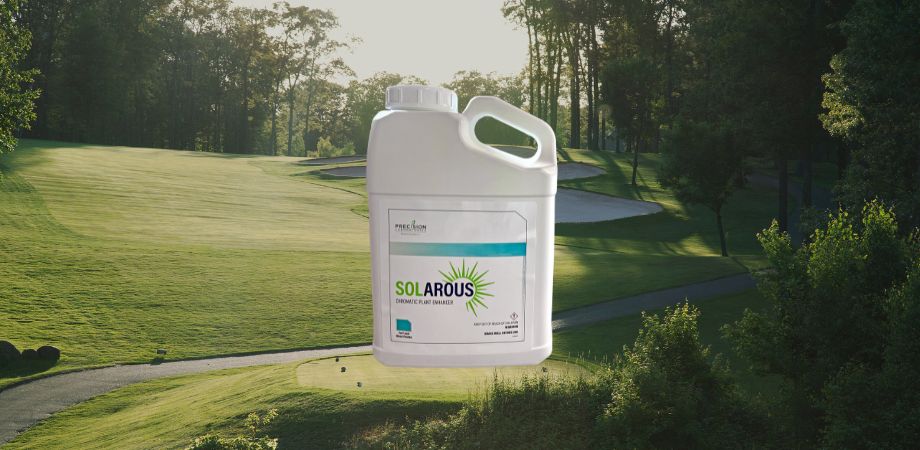There are several types of iron sources, all of which act differently in terms of availability and longevity. But first, let’s discuss the cause of certain iron deficiencies.
Causes of Iron Deficiencies
There could be several areas to look at to diagnose the cause of an iron deficiency. An imbalance of iron with other micronutrients such as copper, zinc, and manganese can tie up iron in the soil. Soil high in phosphorus and even phosphorus applications can also lessen iron availability. In addition, high bicarbonates in the soil and irrigation water can greatly reduce iron accessibility.
Plant-related issues can also lead to iron deficiencies, such as a poor root system, excessive thatch, improper mowing, and excessive nitrogen fertilization.
Choosing the Correct Iron Source
Not all is lost, though. After sifting through the information, several types of iron can be used. Citric acid-based irons will provide green-up but are short-lived. Ferrous sulfate-based irons are available for short periods of time and tend to get tied up in the soil.
True chelated type irons, such as EDTA and LCPA, offer longer residual and are more available for plant uptake. The use of these types of irons on bermudagrass in chilling temperatures can result in increased photosynthesis and produce an increase in color response.
Products such as Foliar-Pak’s Carbosential Fe with chelated iron polysaccharide will produce a nice long color response due to the sugar chain of the polysaccharide. The amino acid in this product will increase nutrient uptake and utilization.
If your soil is high in iron, products such as Foliar-Pak’s Armament line can make not only iron but other tied-up nutrients available to the plant. Identifying the reason for making iron applications and deciding on the right type of iron can definitely lead to greener pastures!












